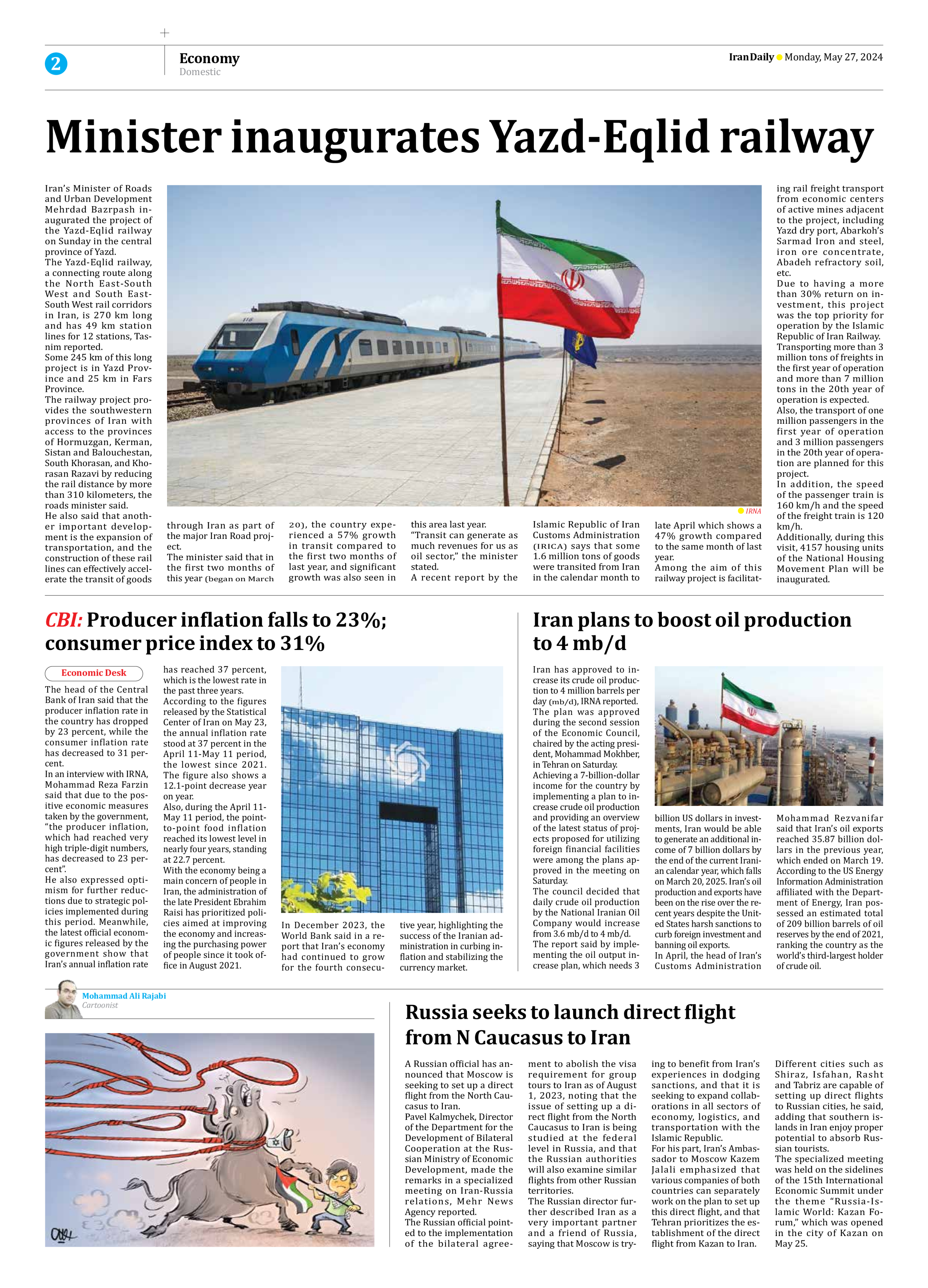
Copy in clipboard...
Minister inaugurates Yazd-Eqlid railway
The Yazd-Eqlid railway, a connecting route along the North East-South West and South East-South West rail corridors in Iran, is 270 km long and has 49 km station lines for 12 stations, Tasnim reported.
Some 245 km of this long project is in Yazd Province and 25 km in Fars Province.
The railway project provides the southwestern provinces of Iran with access to the provinces of Hormuzgan, Kerman, Sistan and Balouchestan, South Khorasan, and Khorasan Razavi by reducing the rail distance by more than 310 kilometers, the roads minister said.
He also said that another important development is the expansion of transportation, and the construction of these rail lines can effectively accelerate the transit of goods through Iran as part of the major Iran Road project.
The minister said that in the first two months of this year (began on March 20), the country experienced a 57% growth in transit compared to the first two months of last year, and significant growth was also seen in this area last year.
“Transit can generate as much revenues for us as oil sector,” the minister stated.
A recent report by the Islamic Republic of Iran Customs Administration (IRICA) says that some 1.6 million tons of goods were transited from Iran in the calendar month to late April which shows a 47% growth compared to the same month of last year.
Among the aim of this railway project is facilitating rail freight transport from economic centers of active mines adjacent to the project, including Yazd dry port, Abarkoh’s Sarmad Iron and steel, iron ore concentrate, Abadeh refractory soil,
etc.
Due to having a more than 30% return on investment, this project was the top priority for operation by the Islamic Republic of Iran Railway.
Transporting more than 3 million tons of freights in the first year of operation and more than 7 million tons in the 20th year of operation is expected.
Also, the transport of one million passengers in the first year of operation and 3 million passengers in the 20th year of operation are planned for this project.
In addition, the speed of the passenger train is 160 km/h and the speed of the freight train is 120 km/h.
Additionally, during this visit, 4157 housing units of the National Housing Movement Plan will be inaugurated.







